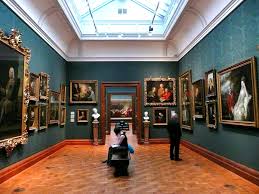Arthur James Melhuish (1829-1895)
November 22, 2013
 Arthur
James Melhuish
(1829-1895) was
a famous and innovative British photographer, and a member of the Royal
Meteorological Society and the Royal Astronomical Society.
Arthur
James Melhuish
(1829-1895) was
a famous and innovative British photographer, and a member of the Royal
Meteorological Society and the Royal Astronomical Society.
Melhuish was a friend of James John Garth Wilkinson and is listed in his address book at 58 Pall Mall, the British Museum of Portraits. Both James John Garth Wilkinson and Melhuish were interested in spiritualism, and Melhuish did some work on The Geology of the Bible _and The Truth about Ghosts, both subjects close to James John Garth Wilkinson’s heart. Melhuish also wrote about _Mental analysis_, another subject he would share with James John Garth Wilkinson (Swedenborg Archive _Address Book of James John Garth Wilkinson dated 1895. _See also Arthur James Melhuish, A Ghostly Annual: The Truth about Ghosts … Together with a Reprint of Letters from The Daily Telegraph, _(H. Vickers, 1883). See also Arthur J Melhuish, Mental analysis, (Longmans, Green, Reader, & Dyer, 1867).).
From http://www.luminous-lint.com/app/photographer/Arthur_James__Melhuish/ ‘… _After a brief stint as a pawnbroker, Melhuish entered the world of photography, perhaps stimulated by his widowed mother’s 1846 marriage to John Buchanan Smith. His first public showing was in the 1855 London exhibition of the Photographic Society, where his seven waxed-paper architectural studies included one interior. _
_In 1856 Melhuish sent nearly twenty architectural views to the society’s exhibition. By 1857 he had begun to work with collodion, although he showed two waxed-paper views at the society. He continued to exhibit there annually through 1860, submitting some waxed-paper photographs in 1859. His last participation in major exhibitions was at the 1861 Architectural Photographic Association in London. _
_Melhuish was an inveterate inventor, although none of his inventions found a wide market. In 1856 he patented his design for a roller slide that permitted the photographer to carry a number of sheets of sensitized paper and change them in the camera without the need for a darkroom. His 1860 metal camera was promoted as being one-third lighter than wooden ones and twice as strong. Melhuish was more successful at building a photographic printing business, employing several assistants, but he had some economic reversals and by 1871 was listed as a picture dealer, operating out of his mother’s house. He was declared bankrupt by 1882. _
_Melhuish rebuilt his reputation, becoming Photographer Royal and by the 1890s hosting a British Museum of Portraits at his Pall Mall studio. He was secretary of the Photographic Association from 1861 to 1889 and was elected a fellow of the Royal Astronomical Society in
- _
Melhuish was born and registered as a Nonconformist Protestant, which perhaps explains why his later contributions to the literature ventured away from photography to include The Geology of the Bible and The Truth about Ghosts. In the 1881 census he listed himself an “artist,” but by the 1891 census, near the end of his life, Melhuish proudly claimed to be a “Photographic Artist.” At least two of his sons and three of his daughters became photographers...’
For further biographical information see also John Hannavy, Encyclopedia of nineteenth-century photography, Volume 2, (Taylor & Francis Group, 2008). Page 920 onwards. See also Roger Taylor, Impressed by Light: British Photographs from Paper Negatives, 1840-1860, (Metropolitan Museum of Art, 2007). Page 348. His obituary is in Anon, Quarterly Journal of the Royal Meteorological Society, Volume 22, (Royal Meteorological Society, 1896). Page 100 and page 111 onward, and in Anon, Monthly Notices of the Royal Astronomical Society, Volume 56, (Priestley and Weale, 1896). Page 200 onwards.